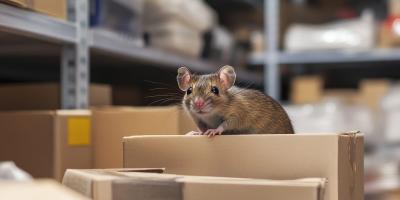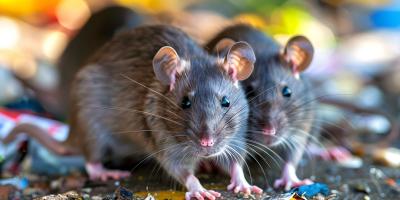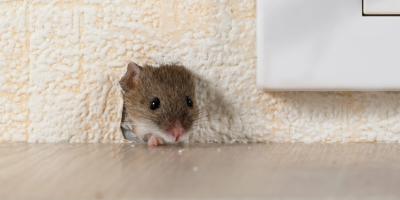Everything You Need to Know About Stored Product Pests

Attention, all grocery stores and food distributors! Are pests causing problems for your business?
Don’t assume that just because you haven’t seen any they aren’t there. In fact, some pests are able to infest your inventory without leaving any trace. We aren’t talking about your normal ants, bees, or moths, we are talking about the pests munching on your stored products.
The question is, where should you look for them and what should you be looking for?
Meet the Main Suspects
In this round up, we’ll give you the details on common stored product pests like the Indian meal moth, weevil, flour beetle, and warehouse beetle. Without further delay… meet your main suspects.
Indian Meal Moth
First up, allow us to introduce you to the Indian meal moth, a bug that typically will dine on dry foods, such as dried fruit, flour, chocolate, powdered milk, and cornmeal. These pests will not go away by killing the few that you find in your flour; instead you need to cut off the food supply.
To do this, you must dispose of any infested food product as well as check the surrounding products. Based on the age of the moths you find, you’ll have a better idea of how long they’ve been a problem for your products.
As far as appearances go, adults typically measure approximately ½ inch and feature an average wingspan of ⅝ of an inch. The wings range from reddish brown at the ends to grayer shades nearer the thorax and head.
While they are a sign of an infestation, it’s important to note that adults do not feed; the damage from an infestation occurs during the larval stage, with larvae measuring about ½ inch and ranging in color from brown, greenish or even pink; the shades are actually determined by the food source.
The Indian meal moth’s life span ranges between 27-305 days, with females capable of laying up to 400 eggs! After disposing of any infested product, it is best to clean the cabinets or shelves with a vacuum, as well as soap and water where you found the perpetrator.
Next is the weevil.
Weevil
A weevil is a beetle easily identified by its elongated snout; however, there are up to 97,000 types of weevils.
What makes a weevil different from other beetles that feed on our food is that a weevil lives inside our food. Yes, you read that correctly, a mother weevil, capable of laying up to a total of 400 eggs, will burrow into a grain, seed, or piece of rice and lay eggs.
This is easy enough for weevils to do, given their small stature, measuring an average of ⅛-¼ inches; rice weevils are even teenier, measuring only one-sixteenth of an inch.
Once burrowed, a mother weevil will seal the opening so her babies are born inside of your food. Weevils are tricky, if they are found they will “play dead” but don’t believe them!
How can they live inside of food sources as small as grains and rice? Some weevils, like the only measure
Instead, toss your supply of infested food.
Flour Beetles
Flour beetles, otherwise known as the confused flour beetle or the red flour beetle share a similar build and shade, measuring between an average ⅛ - 3/16 inches and typically reddish-brown in color.
These flour beetles will scavenge and feed on food like flour (not surprisingly) and grains during transportation, which means that a grocer or food distributor could unwittingly purchase food that is already infested before it even hits the shelves.
Unlike their fellow stored product pests, flour beetles can live for more than a year and are capable of producing up to five generations annually, so even if you think you have eliminated the adults, there could be more on the way.
Warehouse Beetles
Unlike the other suspects on this list, warehouse beetles will not only feed on stored products, but also other dead insects like boxelder bugs, flies, and ladybugs. You can spot a warehouse beetle by its oval shape, set off by dark brown or black shades, further distinguished by off-white, yellowish hairs across its back. While the larvae measure about ¼-inch, the adults range between ⅛ - 3/16-inches in length.
In addition to hiding in stored food products, warehouse beetles have also been known to hide in the walls, attics, and cracks in cabinets. Since a single source of an infestation might be tough to locate, it’s best to rely on professional pest control services to diagnose, treat, and win the war on warehouse beetles.
Protect Your Business and Bottom Line
The costs associated with an infestation of stored pantry pests isn’t just financial. While the presence of these pests can certainly take a bite of your bottom line, due to product loss, you might also discover that your brand’s reputation has also suffered. In this digital age, we all know how easy it is for consumers to share reviews and opinions online for all to see.
Ultimately, taking a chance on DIY protection against stored pantry pests just isn’t worth it.
Investing in professional pest management not only protects your business and brand name, but also provides you with invaluable peace of mind. At JP Pest, we have the experience and expertise to stop these potentially detrimental pests early before they sit down to have their first meal on your valued products.
Fight Back with IPM
Otherwise known as integrated pest management, IPM is a process that prioritizes prevention and then treatment. We use our extensive knowledge of the life cycle of these pests and their habits to protect against them. If they are already on-site, we rely on our expertise to eliminate the pests and then put controls in place to prevent them from returning in the future.
Worried you may have some unwanted visitors shopping in your store? Schedule a free on-site consultation with a local service planner who specializes in the food distribution industry.



